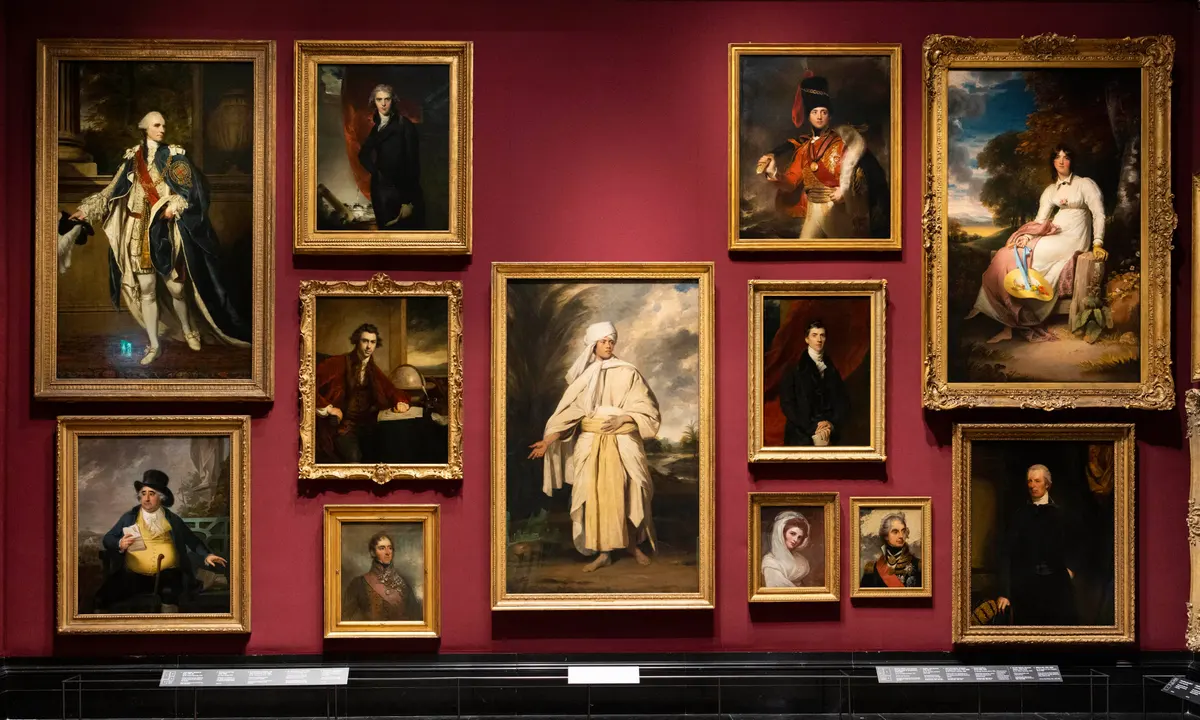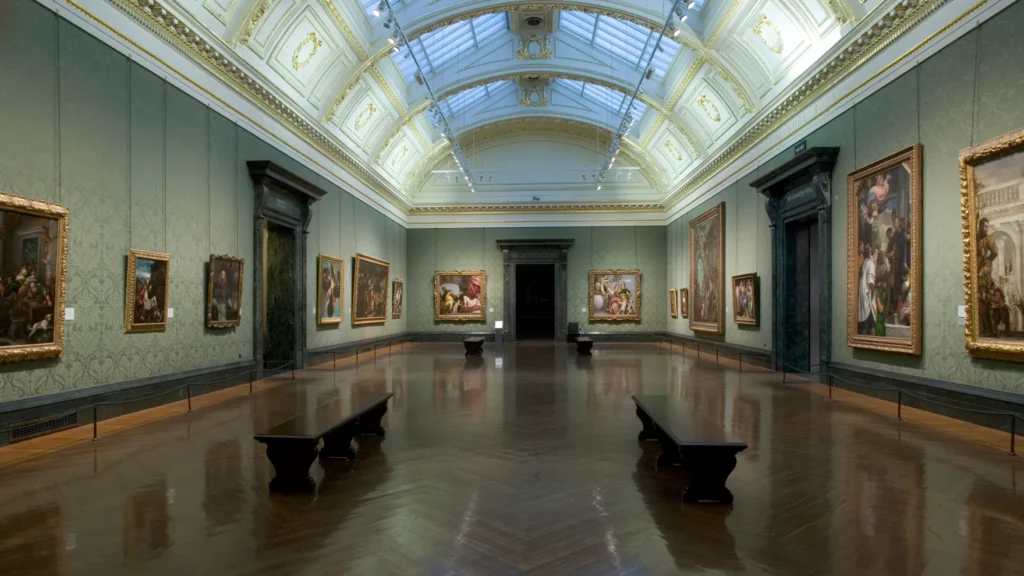Carrying an extensive and varied collection spanning centuries and continents, the National Art Gallery in London is a shining example of artistic quality. Conveniently located in the center of the city, this cultural establishment provides guests with an exceptional chance to explore the history of art. In this piece, we shall examine the importance of the National Art Gallery, its background, noteworthy holdings, and its influence on London’s cultural scene.
The National Gallery, London:
Table of Contents
Located in central London, England’s City of Westminster, on Trafalgar Square, lies the National Gallery, an art museum. Located in Trafalgar Square in 1838 and founded in 1824, it is home to a collection of more than 2,300 artworks that span the years from the middle of the 13th century to 1900. Gabriele Finaldi is the National Gallery’s current director.
| Address | Trafalgar Square, London WC2N 5DN, United Kingdom |
| Narratives from the anthology | Venezia by Monet, PLUS |
| Time | Open ⋩ Closes at 6 p.m. |
| Supervisor | Gabriele Finaldi |
| Telephone | +44 20 7747 2885 |
| Total Visters in 2022 | 2,727,119 |

A Brief History:
With a rich history that stretches back to the early 19th century, the National Gallery is situated on Trafalgar Square in the center of London.
- Establishment (1824): The British government acquired a set of 38 paintings from the late industrialist John Julius Angerstein’s estate, therefore establishing the National Gallery. The collection, which was originally kept in Angerstein’s home on Pall Mall, includes pieces by Titian, Rembrandt, and Raphael.
- The location of Trafalgar Square in 1838: The National Gallery was to be relocated to a larger, more noticeable space as the collection grew. At its present site on Trafalgar Square, the gallery first welcomed visitors in 1838. The neoclassical structure that has grown to be a symbol of London’s cultural landscape was created by architect William Wilkins.
- Expansion and Renovations: The National Gallery has experienced multiple expansions and modifications throughout the years to serve its growing collection better and to upgrade its infrastructure. More room was created to accommodate art exhibitions and displays by adding extensions like the Sainsbury Wing.
- Global conflicts: During World Wars I and II, the gallery encountered difficulties. Artworks were relocated to safer areas to guard against any damage during the wars. All the same, the National Gallery persisted in carrying out its mandate of providing the general public with access to art.
- Notable Acquisitions: Through acquisitions, the National Gallery has enhanced its collection over time. “The Ambassadors” by Hans Holbein the Younger, “The Arnolfini Portrait” by Jan van Eyck, and “Sunflowers” by Vincent van Gogh are some of its most well-known acquisitions.
- Educational Initiatives: The National Gallery has long been committed to teaching and cultural enrichment, in addition to its role as a guardian of art. Diverse educational programs, talks, and workshops are provided to cater to a wide range of age groups and backgrounds.
- Active Community Engagement: The National Gallery works closely with schools and cultural institutions to establish partnerships, outreach initiatives, and other forms of community engagement. The gallery guarantees that art stays a vital and dynamic component of London’s cultural landscape by cultivating a relationship with the neighborhood.

Debates & Conflicts:
The National Gallery’s conservation program has been subject to one of the most enduring criticisms, aside from those who point out the building’s shortcomings. Some who disapproved of the gallery said it had taken a stringent stance towards restoration. Following Eastlake’s appointment as Keeper, the National Gallery had its first cleaning operation in 1844.
Check Out More About London’s National Gallery Here:
Media criticism followed the public unveiling of the first three cleaned paintings in 1846: a Rubens, a Cuyp, and a Velázquez. J. Morris Moore, who went by the pen name “Verax” and penned several letters to The Times criticizing the gallery’s cleanings, was the most outspoken opponent of the show. Though the Gallery was exonerated of all charges by an 1853 Parliamentary Select Committee that looked into the case, some members of the art elite have periodically criticized the Gallery’s practices ever since.
For what reason is London’s National Gallery well-known?
Our collection comprises more than 2,300 pieces, many of which are well-known paintings, like Arnolfini Portrait by van Eyck, Rokeby Venus by Velázquez, Fighting Temeraire by Turner, and Sunflowers by Van Gogh.

What is the National Gallery of London’s most well-known image?
Van Gogh’s Sunflowers and Holbein’s The Ambassadors are the next most viewed painting pages, with the most views going to Jan van Eyck’s stunning The Arnolfini Portrait. Turner, Leonardo, Velázquez, Titian, Constable, Botticelli, Monet, Caravaggio, and Vermeer are among the other artists whose paintings are considered favorites by tourists.

Thank you for sticking with us to the end. More similar articles can be found on the home page of uszizz
Read More: Jack McBrayer: Spreading Joy Through Two Decades of Endearing Performances in Film and TV

